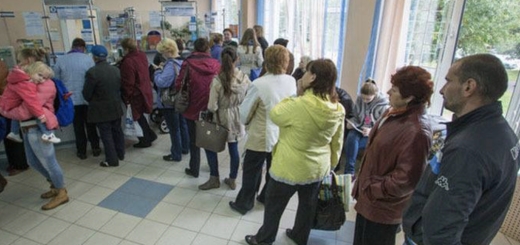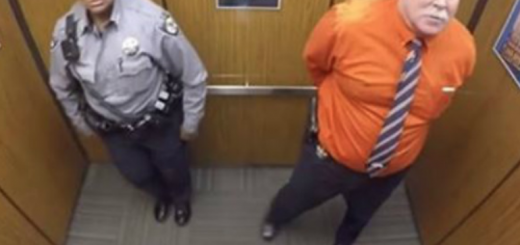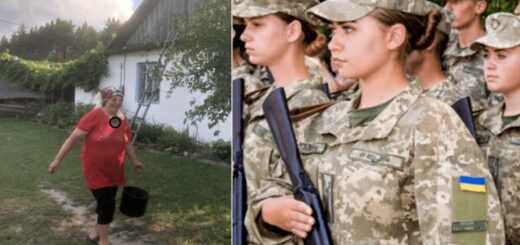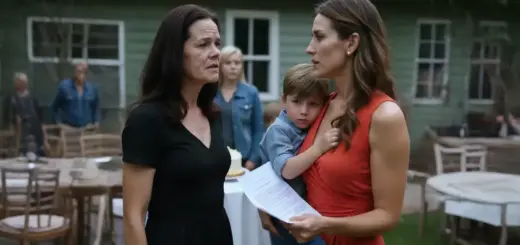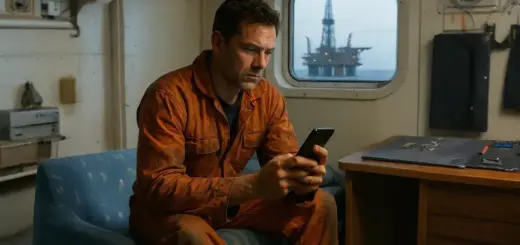The morning of Flight 847’s departure had begun with yet another rejection. The email from Air France had arrived just as she was finishing her pre-flight coffee. «After careful consideration,» the message read, «we have decided to pursue other candidates whose experience more closely aligns with our current operational needs.» The euphemistic language couldn’t disguise what had become a predictable pattern.
This particular rejection stung because the Air France interview had gone exceptionally well from a technical standpoint. She had answered every systems question perfectly and demonstrated comprehensive knowledge of European airspace regulations. But in civilian aviation recruitment, performance seemed secondary to subtleties and implications that had nothing to do with her ability to fly an aircraft safely. The frustration had been building for weeks.
Her funds were running low despite careful financial planning. The extended job search had stretched longer than anticipated, and London’s cost of living was steadily eroding her transition fund. More concerning was the growing pressure from well-meaning family members who had begun suggesting she return to military service. «Maybe the airlines are trying to tell you something,» her sister, Carmen, had said. «Why not stay where you’re appreciated?»
The gender factor was impossible to ignore. Aviation remained male-dominated, and the subtle biases were pervasive. She had watched male colleagues from her military service receive civilian offers after single interviews, while she was subjected to multiple rounds of evaluation for similar positions. Her physical appearance compounded the challenge. At 5’4″ and with a naturally quiet demeanor, she didn’t project the imposing presence many recruiters associated with airline captains.
The psychological toll was becoming significant. For the first time since joining the military, she had begun to question her own capabilities—not her technical skills, but her understanding of what civilian aviation required. As she had settled into seat 23C, she had overheard a conversation between two passengers. One had mentioned preferring flights with «experienced-looking» captains because it made him feel more confident. The comment highlighted the perception gap she was fighting against.
As Flight 847 had reached cruising altitude, Fallon had tried to push aside her frustrations. British Airways was her last opportunity in London, and she had prepared exhaustively. But the rejection from Air France had crystallized something: she was tired of proving herself to people who weren’t qualified to evaluate her capabilities. In three minutes, those frustrations would become irrelevant.
At 11:47 a.m. local time, Flight 847 was 23 minutes from its scheduled arrival at London Heathrow when Captain Harrison keyed his microphone. «Ladies and gentlemen, from the flight deck, we’re beginning our initial descent into London Heathrow. Weather conditions are excellent… We should have you on the ground right on schedule.» The announcement was routine, delivered in the calm, professional tone passengers expected.
In the galley, Senior Flight Attendant Marcus Webb was preparing the cabin for landing. First Officer Chun was updating the flight management system when she noticed the first anomaly: a subtle change in engine noise that lasted barely two seconds. She glanced at the engine parameters, but all readings appeared normal. Still, her training had taught her to investigate anything unusual.
«Mike, did you hear that engine noise change about thirty seconds ago?» she asked Captain Harrison. He nodded, having noticed the same thing. «I caught that, too. All parameters look good, though. Probably just a momentary fluctuation in fuel flow.» What neither pilot realized was that the momentary irregularity was the first symptom of a catastrophic failure developing deep within the aircraft’s number two engine.
At 11:49 a.m., a microscopic crack in a turbine blade became a complete fracture. The blade separation happened in milliseconds, but its effects cascaded through multiple aircraft systems with devastating speed. The failed blade struck adjacent blades, creating a catastrophic unbalance that sent violent vibrations throughout the engine. Within seconds, the entire engine began tearing itself apart from the inside.
The first indication in the cockpit was a violent shudder that seemed to shake the entire aircraft. Then came a series of warning lights and alarms that turned the quiet flight deck into chaos. «Engine fire, number two!» Chun called out, her voice sharp with adrenaline. But before Harrison could respond, the situation became much worse. The engine separation was so violent that it severed critical hydraulic lines and electrical systems.
Within 30 seconds, the aircraft had lost primary flight controls, backup hydraulic power, and several crucial avionics systems. Harrison fought the controls as the aircraft began an uncommanded roll to the right. The fly-by-wire system was failing, leaving the pilots with limited manual control over a machine that suddenly wanted to tear itself apart in the sky. «Mayday, mayday, mayday,» Harrison transmitted on the emergency frequency. «British Airways 847, we have multiple engine failure and system malfunctions.»
In the passenger cabin, the violent shaking and sudden altitude changes had triggered panic. Oxygen masks dropped from the overhead compartments. Passengers screamed as luggage fell from overhead bins and the aircraft pitched and rolled. Most were terrified but helpless, strapping themselves into their seats and following the flight attendants’ shouted instructions.
But in seat 23C, Fallon Martinez was making calculations. Her trained ear had recognized the specific sound signature of a catastrophic engine separation. Her eyes tracked the aircraft’s unusual movements, identifying control responses that suggested hydraulic failure. While other passengers prayed or panicked, Fallon was mentally reviewing emergency procedures for exactly this type of failure scenario.
In the cockpit, Captain Harrison and First Officer Chun were discovering that their aircraft was beyond the scope of standard emergency procedures. «Sarah, I can’t control the pitch,» Harrison said through gritted teeth. «The elevators aren’t responding properly, and we’re losing hydraulic pressure in all three systems.» Chun was working frantically through checklists, but the combination of failures wasn’t covered by any single procedure.
Flight 847 was going down, and everyone on board was about to discover what Passenger 127 could do when the impossible became the only option for survival. In the cockpit, Captain Harrison and First Officer Chun were working with the desperate efficiency of professionals running out of options. The aircraft continued its erratic descent, bleeding away altitude at nearly 3,000 feet per minute.
«Sarah, try the backup hydraulic system,» Harrison commanded. Chun’s fingers flew across the emergency panel. «Backup hydraulics are showing pressure, but I’m not getting any response from the flight controls,» she reported, her voice tight with controlled panic. «Primary and secondary systems are completely offline.»
The radio crackled with urgent transmissions from London Control. «British Airways 847, what is your current flight condition?» Harrison keyed his microphone. «London Control, we have complete hydraulic failure and minimal flight control authority. Aircraft is descending through flight level 270 and we cannot arrest the descent.» Both pilots knew that reaching any airport was becoming increasingly unlikely.
Twenty miles away, the two F-22 Raptors that had been conducting training exercises were receiving urgent communications from RAF Control. «Falcon Lead, this is RAF Control,» came the transmission. «Be advised that British Airways 847 is in emergency descent… We’re tasking you to provide visual reconnaissance.» Squadron Leader Morrison acknowledged the transmission and banked his F-22 toward the coordinates provided.
«Falcon 2, form up on me,» Morrison commanded his wingman. «We’re going to take a look at this airliner.» As the Raptors accelerated toward Flight 847, Torres was already questioning what they could accomplish. Fighter jets could observe and report, but they couldn’t physically help with the emergency that was unfolding at flight level 240.
Back on Flight 847, the passenger cabin had descended into barely controlled chaos. Marcus Webb, the senior flight attendant, was attempting to coordinate emergency preparations while dealing with his own fear. «Ladies and gentlemen, please ensure your seatbelts are fastened tightly,» Webb announced over the cabin address system, his voice professionally calm despite the circumstances.
In seat 23C, Fallon had been monitoring the cockpit communications on a small radio receiver. What she was hearing confirmed her worst fears. The pilots were reporting system failures that, in combination, made controlled flight nearly impossible. Rising from her seat, she began making her way toward the cockpit, moving with the confident stride of someone who knew exactly what needed to be done.
The aircraft lurched violently, but her balance remained perfect. As she approached the cockpit door, Marcus Webb intercepted her. «Ma’am, you need to return to your seat immediately,» Webb said firmly. Fallon looked at him with calm eyes. «I need to speak with the captain immediately,» she said, her tone suggesting this wasn’t a request. «I’m a military pilot with experience in aircraft emergency situations, and I may be able to help.»
Webb’s first instinct was to refuse, but something in her demeanor made him hesitate. She projected the kind of calm competence he associated with crew members, not passengers. Before he could respond, the aircraft pitched forward into a steeper dive, and alarms began sounding throughout the cabin. In the cockpit, the pilots were facing the reality that conventional solutions were not going to save them.
Fallon didn’t wait for Marcus Webb’s permission. She moved past the flight attendant as Webb found himself following rather than stopping her. The cockpit door opened to reveal Captain Harrison and First Officer Chun in the middle of a losing battle. «Captain Harrison,» Fallon announced, her voice cutting through the cacophony of alarms. «I’m Major Fallon Martinez, Spanish Air Force. I have extensive experience with multi-system aircraft failures, and I believe I can assist.»
Harrison’s initial reaction was disbelief mixed with irritation. «Ma’am, I appreciate the offer, but this is not the time for—» he began. «Captain, you’re dealing with catastrophic hydraulic failure combined with flight control system damage,» Fallon interrupted, her voice remaining steady as she assessed the cockpit displays over his shoulder. «Your primary concern right now is preventing the aircraft from entering an unrecoverable dive.»
Chun looked up, surprised by the technical accuracy of the passenger’s assessment. «How do you know our system status?» she asked. «Because I’ve been monitoring your radio communications, and I can read your instrument displays,» Fallon replied. «More importantly, I’ve trained extensively for exactly this type of emergency. You’re attempting to use standard Boeing emergency procedures, but this failure combination requires manual flight techniques that aren’t covered in civilian training programs.»
The aircraft pitched into an even steeper dive, forcing Harrison to use both hands just to prevent a complete loss of control. «What manual flight techniques?» Chun asked, desperation creeping into her voice. Fallon moved closer to the center console. «You’re fighting the aircraft instead of working with it. You need to use differential thrust combined with rudder inputs to maintain directional control, while using elevator trim to manage pitch attitude.»


















